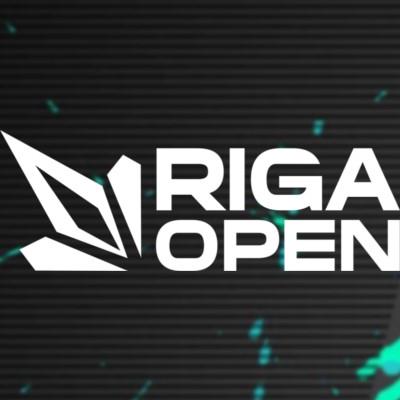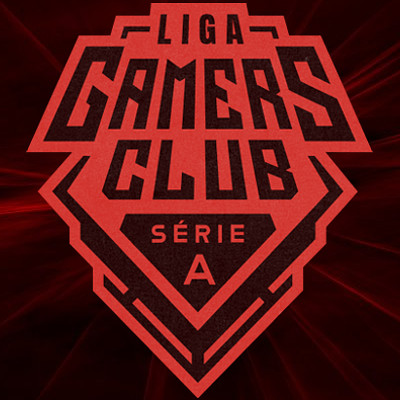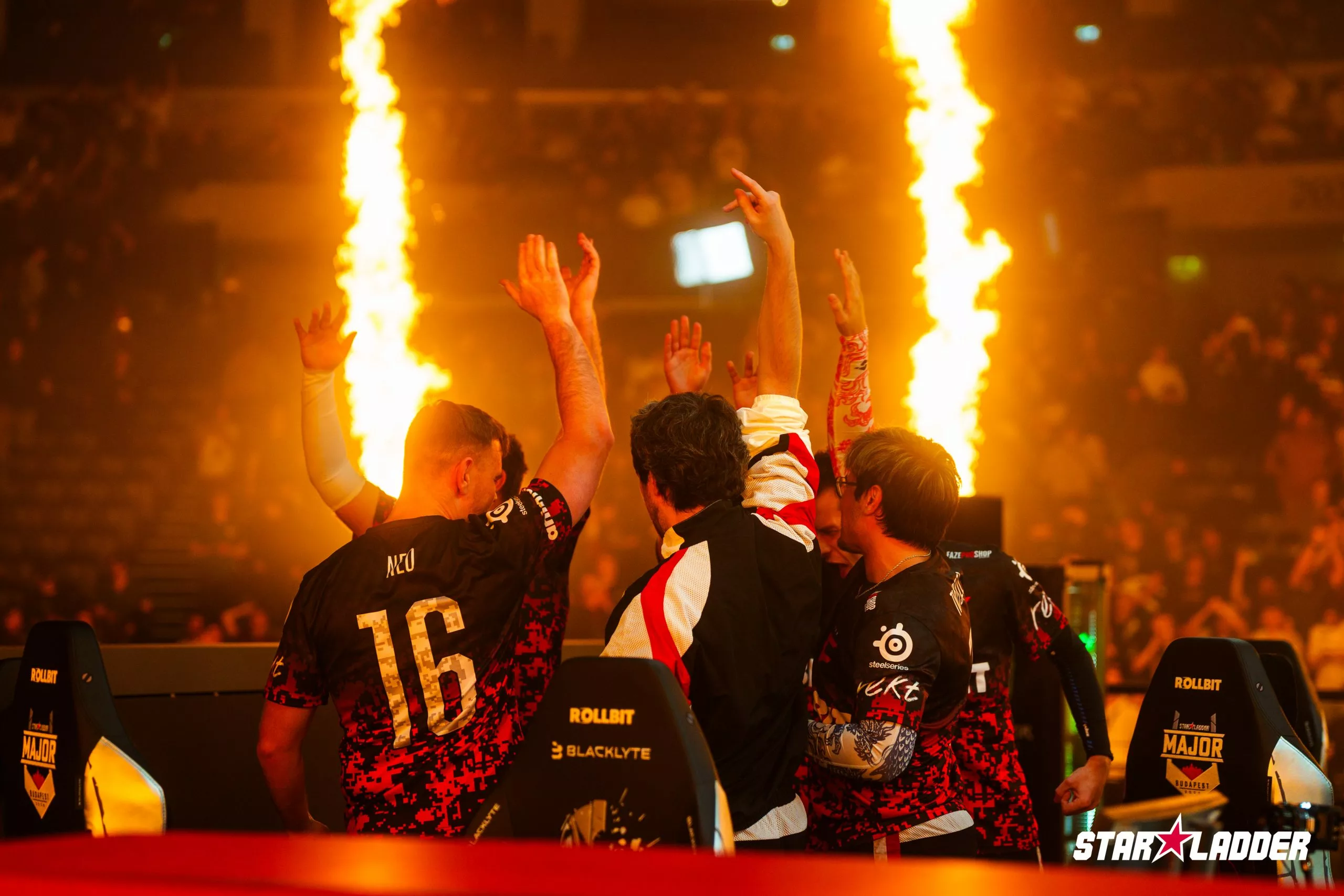
CS:GO Esports




Team Spirit Resets, Brings Back magixx and zont1x
Team Spirit just made a major roster shake-up that nobody saw coming. Boris "magixx" Vorobyev and Myroslav "zont1x" Plakhotia are back in the starting lineup, while Leonid "chopper" Vishnyakov and Ivan "zweih" Gogin have been moved to the bench. This is a stunning reversal for an organization that won the Shanghai Major earlier this year with magixx, only to bench him months later. The move comes after Spirit's disappointing performance at the StarLadder Budapest Major 2025, where things clearly weren'tmore




Finished







Vitality Succeed Over FaZe Clan, Lift Second Consecutive Major Title in Budapest
The final Counter-Strike 2 major of 2025 comes to a close tonight in Budapest as Team Vitality are crowned the victors in the MVM Dome arena. Victory came for Vitality after defeating FaZe Clan 3-1 in CS2’s first ever Major Bo5. Vitality: Writing History In the Present A successful lift to cap of what will undoubtedly, in the years to come, be considered one of the greatest runs from any team within a single competitive year. Vitality’s victory tonight came at the expense of FaZe Clan, whose own journey in Budapest was a thrilling revival of form and excitement. Themore

Vitality vs FaZe: Budapest Major 2025 Grand Final Preview - Dynasty vs Destiny in a Historic Bo5
It all comes down to this. Team Vitality and FaZe Clan are going to battle it out in the StarLadder Budapest Major 2025 grand final on December 14th, and what a story it's turning out to be. The MVM Dome's packed with 20,000 fans ready to lose their minds, $1,250,000 is on the line, and for the first time ever, a CS Major grand final goes to a best-of-five. Yeah, this one's different. Two completely different journeys Vitality's path? Clinical.more
Counter-Strike is a highly influential first-person shooter franchise in competitive gaming (esports). Originating as a user-created modification, it has become a global esports phenomenon, significantly shaping the genre for over two decades. This document provides a factual overview of Counter-Strike's history, its esports ecosystem, key players and teams, major competitions, and its cultural and economic impact.
Franchise History and Development
Counter-Strike's development spans several key versions, each contributing to its esports legacy.
Origins: Mod to Standalone (1999-2003)
Counter-Strike originated in 1999 as a Half-Life modification by Minh "Gooseman" Le and Jess Cliffe. Its team-based, objective-focused gameplay (Terrorists vs. Counter-Terrorists) gained rapid popularity due to its emphasis on strategy and teamwork.
Valve Corporation acquired the rights, releasing a standalone version in November 2000. Counter-Strike 1.6 (released 2003 via Steam) became the standard for competitive play, characterized by refined mechanics and a high skill ceiling. Early major tournaments like the Cyberathlete Professional League (CPL), World Cyber Games (WCG), and Electronic Sports World Cup (ESWC) established its professional scene.
Subsequent Iterations (2004-2011)
Valve released Counter-Strike: Condition Zero (March 2004), primarily adding single-player content, and Counter-Strike: Source (November 2004), built on the new Source engine with improved graphics and physics.
Counter-Strike: Source created a division in the competitive community. While some adopted the new version, many professional players preferred CS 1.6 for its established gameplay nuances. Consequently, two distinct competitive scenes operated for several years, with CS 1.6 largely maintaining its status as the premier global esports title.
Unification with Counter-Strike: Global Offensive (CS:GO) (2012-2022)
Counter-Strike: Global Offensive (CS:GO), released in August 2012 by Valve and Hidden Path Entertainment, successfully unified the player base and modernized the franchise.
Key features contributing to CS:GO's success:
- Refined core gameplay: Appealing to veterans of previous versions.
- Integrated matchmaking: Increasing accessibility for competitive play.
- "Skins" economy: Introduction of cosmetic weapon finishes, creating a significant virtual market and boosting player engagement.
- Direct Valve support for esports: Notably the establishment of Major Championships.
CS:GO became the dominant version, experiencing substantial growth in its player base, viewership, and tournament prize pools, solidifying its position as a leading global esport.
Current Version: Counter-Strike 2 (CS2) (2023-Present)
In September 2023, Valve launched Counter-Strike 2 (CS2) as a free upgrade to CS:GO, utilizing the Source 2 engine.
Key CS2 enhancements include:
- Updated graphics and visual effects.
- Volumetric smoke grenades: Dynamically reacting to game physics, altering tactical approaches.
- Sub-tick server architecture: Aimed at improving action responsiveness and registration.
- Redesigned maps: Utilizing new engine capabilities.
CS2 represents the latest technological advancement for the franchise. The esports scene has fully transitioned to CS2, with ongoing updates and refinements by Valve.
The Counter-Strike Esports Ecosystem
The professional Counter-Strike scene comprises Valve, third-party tournament organizers, teams, players, and a global fanbase.
Valve's Role: The Major Championships
Valve's primary direct involvement is through the Counter-Strike Major Championships (Majors), the most prestigious tournaments in the game.
- Significance: Majors offer the largest prize pools (typically $1.25 million USD; PGL Major Stockholm 2021 reached $2 million) and confer the official World Champion title.
- Timeline: The first Valve-sponsored Major was DreamHack Winter 2013.
- In-Game Features: Majors feature integrated content like team/player stickers (with revenue sharing), souvenir items, and the "Pick'Em Challenge."
- System Evolution: Valve continues to refine the Major system, including qualification pathways and new tournament invitation guidelines (from 2025) based on an official Valve ranking.
Key Tournament Organizers
Several independent organizers manage major international tournaments:
- ESL (Electronic Sports League): Hosts prominent events like ESL Pro League, Intel Extreme Masters (IEM) Katowice, and IEM Cologne.
- BLAST: Runs the BLAST Premier circuit (Spring, Fall, World Final) and hosted the BLAST.tv Paris Major 2023. Known for high-energy broadcasts.
- PGL (Professional Gamers League): Has organized multiple Majors, including PGL Major Stockholm 2021 and the first CS2 Major (PGL Major Copenhagen 2024).
- Others: Companies like Perfect World (Asia) and WePlay Esports also host significant international events.
These entities provide a continuous global competitive circuit.
Economic Structure
Counter-Strike esports is supported by diverse revenue streams:
- Prize Money: Annual prize money across significant tournaments totals tens of millions of USD.
- Sponsorships: Teams and events secure sponsorships from endemic (gaming-related) and non-endemic brands.
- Skin Economy: The in-game market for cosmetic weapon finishes ("skins") is a major economic factor, driving player engagement and generating revenue for Valve through market transactions.
- Media Rights & Advertising: Broadcasting rights for major events are sold, and advertising features in live streams.
- Merchandise: Sales of team and event-branded apparel and items.
- Crowdfunding: Revenue from Major-related in-game items (e.g., stickers) partially supports participating players and organizations.
Notable Players and Teams
Counter-Strike's history features numerous highly skilled players and dominant teams.
Influential Players (Selected)
- Oleksandr "s1mple" Kostyliev (Ukraine): Widely considered one of CS:GO's greatest players; exceptional AWPer; PGL Major Stockholm 2021 champion with Natus Vincere.
- Nicolai "dev1ce" Reedtz (Denmark): Key player for Astralis; highly consistent AWPer; winner of four Majors.
- Mathieu "ZywOo" Herbaut (France): Top-tier talent; led Team Vitality to victory at BLAST.tv Paris Major 2023.
- Christopher "GeT_RiGhT" Alesund & Patrik "f0rest" Lindberg (Sweden): CS 1.6 legends who transitioned successfully to CS:GO with Ninjas in Pyjamas; known for individual skill and longevity.
- Marcelo "coldzera" David (Brazil): Two-time Major MVP with Luminosity/SK Gaming during their 2016 dominance.
- Kenny "kennyS" Schrub (France): Highly skilled and aggressive AWPer, particularly impactful in early CS:GO.
Dominant Teams and Eras
- Ninjas in Pyjamas (NiP) (Sweden): Dominated early CS:GO (2012-2013) with an 87-0 LAN map streak; won ESL One Cologne 2014.
- Fnatic (Sweden): Multiple dominant periods; won three CS:GO Majors (DreamHack Winter 2013, ESL One Katowice 2015, ESL One Cologne 2015).
- Luminosity Gaming / SK Gaming (Brazil): Won two consecutive Majors in 2016 (MLG Columbus, ESL One Cologne).
- Astralis (Denmark): Considered the most dominant CS:GO team (2018-2021); won four Majors, known for tactical innovation.
- Natus Vincere (Na'Vi) (CIS Region): Won PGL Major Stockholm 2021 and PGL Major Copenhagen 2024 (first CS2 Major).
- FaZe Clan (International): Won PGL Major Antwerp 2022; known for star-studded international rosters.
Global Impact and Community
Counter-Strike possesses a significant global footprint and a dedicated community.
Global Reach and Regional Presence
Strong competitive scenes and fanbases exist worldwide:
- Europe: Historically the most successful region, with high concentrations of top teams (Scandinavia, France, Eastern Europe/CIS).
- North America: Large player base; produced Major-winning teams (e.g., Cloud9, Boston 2018).
- CIS (Commonwealth of Independent States): Consistently produces elite teams and players (Russia, Ukraine, Kazakhstan).
- South America: Brazil is a key nation with a passionate fanbase and internationally successful teams.
- Asia & Oceania: Growing regional scenes with increasing international participation.
Viewership and Broadcasting
Counter-Strike esports attracts large audiences:
- Viewership Numbers: Major tournament finals often exceed millions of concurrent online viewers (Twitch, YouTube).
- Production Quality: Broadcasts are professional, featuring expert commentators, analysts, and advanced observer tools.
- Community Casting: Numerous independent streams in various languages supplement official broadcasts.
Community Engagement
The Counter-Strike community is highly active:
- Online Platforms: Discussions occur on Reddit (e.g., r/GlobalOffensive), social media, and dedicated forums.
- Content Creation: Extensive community-generated content includes highlights, guides, news, and artwork.
- Live Event Attendance: Major tournaments draw large, enthusiastic crowds.
- In-Game Culture: The game has a distinct lexicon and shared cultural references.
Counter-Strike 2: Current Era
The 2023 transition from CS:GO to CS2 introduced significant changes.
Gameplay and Strategic Adjustments
Key CS2 changes affecting competitive play:
- Volumetric Smokes: Dynamic smoke grenade physics requiring new tactical considerations.
- Sub-tick Architecture: Intended to enhance action responsiveness.
- Map Overhauls: Visual and layout changes to classic maps.
- MR12 System: Matches are "Max Rounds 12" per half (first to 13 wins, excluding overtime), affecting match pacing and economy.
Player and Team Adaptation
Professionals have adapted by:
- Developing new utility strategies.
- Learning revised map layouts, timings, and rotations.
- Adjusting to the evolving CS2 meta-game.
- Fine-tuning technical settings for the new engine.
Esports Scene Transition
The professional circuit has fully adopted CS2. The PGL Major Copenhagen 2024 was the first CS2 Major. Tournament organizers and broadcasters have updated their productions accordingly.
FAQ
What is Counter-Strike?
Counter-Strike is a first-person shooter game that has taken the world by storm. What started as a simple mod for Half-Life in 1999 has now become a global esports phenomenon, with millions of players and fans around the world.
How do I download Counter-Strike?
Counter-Strike is available for download through the Steam platform. Here's how you can download and install the game:
- 1. First, you need to have the Steam client installed on your computer. If you don't have it, download it from the official Steam website (https://store.steampowered.com/about/) and install the client.
- 2. Launch the Steam client and log in to your account. If you don't have a Steam account, you will need to create one by clicking on "Join Steam" and following the account creation process.
- 3. Once logged in, click on the "Store" tab at the top of the client.
- 4. In the search bar located in the top-right corner, type "Counter-Strike" and press Enter.
- 5. Locate the game in the search results and click on it to visit the game's store page.
- 6. On the game's store page, click the "Play Game" button since Counter-Strike is a free-to-play game. This will add the game to your library and initiate the download process.
- 7. After the game has been added to your library, click on "Library" at the top of the Steam client, locate Counter-Strike in your game list, and click on it. If the game has not started downloading automatically, click the "Install" button to begin the download process.
- 8. Once the download and installation are complete, click "Play" to launch Counter-Strike: Global Offensive.
Please note that Counter-Strike is available for Windows, macOS, and Linux operating systems. Ensure that your computer meets the minimum system requirements for the game to have an optimal gaming experience.
What are the origins of Counter-Strike?
Counter-Strike was originally created as a mod for the popular first-person shooter game Half-Life. The mod was developed by Minh "Gooseman" Le and Jess Cliffe in 1999. It quickly gained popularity among players for its unique gameplay and mechanics. In the mod, players were divided into two teams, terrorists and counter-terrorists, and had to complete objectives such as planting or defusing bombs or rescuing hostages. The success of the mod led to the development of a standalone game, Counter-Strike 1.0, which was released in 2000.
How did professional Counter-Strike esports emerge?
As Counter-Strike continued to gain popularity, professional esports teams began to form and compete in tournaments. The first major Counter-Strike tournament was the Cyberathlete Professional League (CPL) Summer Championship in 2001, which had a prize pool of $100,000. This was a huge milestone for esports, as it was the first time that a video game tournament had such a large prize pool.
From there, Counter-Strike tournaments continued to grow in size and popularity, with events like the Electronic Sports World Cup (ESWC) and the World Cyber Games (WCG) drawing in thousands of players and spectators from around the world. Today, Counter-Strike is one of the most popular esports games, with professional teams competing in leagues like the ESL Pro League and the FACEIT Pro League for millions of dollars in prize money.
When did Counter-Strike: Global Offensive launch?
In 2012, Valve Corporation released Counter-Strike: Global Offensive (CS:GO), the fourth instalment in the Counter-Strike series. Counter-Strike introduced new maps, weapons, and game modes, as well as improved graphics and gameplay mechanics. The game quickly gained a massive following, with millions of players logging on to play each day.
Counter-Strike also became a major esports title, with tournaments like the ESL One and the Intel Extreme Masters featuring large prize pools and top professional teams from around the world. Today, Counter-Strike remains one of the most popular and competitive esports games, with a thriving community of players and fans.
What does the future of Counter-Strike and esports look like?
The future of Counter-Strike and esports looks bright. With the continued growth of the gaming industry and the increasing popularity of esports, it's likely that Counter-Strike will remain a major player in the competitive gaming scene for years to come. Valve Corporation has also shown a commitment to supporting the game and its community, with regular updates and improvements to gameplay and features as well as the recent announcement of CS:GO 2. As technology continues to advance, it's possible that we may see even more immersive and engaging esports experiences in the future.
Welcome to our dedicated Counter-Strike Esports page, where you'll find everything you need to stay informed and connected with the thrilling world of Counter-Strike esports. From the latest news and tournament updates to detailed match analysis and live scores, we bring you comprehensive coverage of one of the most iconic and enduring first-person shooter games in the competitive gaming scene.
Discover the strategies and stories behind your favourite teams and players, and immerse yourself in the high-stakes, adrenaline-pumping action of Counter-Strike: Global Offensive. Whether you're a casual fan or an aspiring pro, our platform is your one-stop destination for all things Counter-Strike esports.



























































